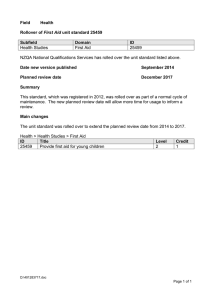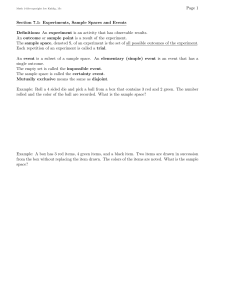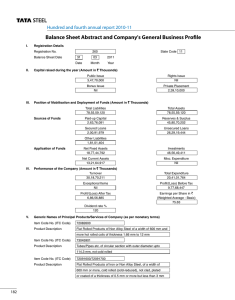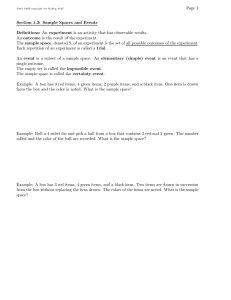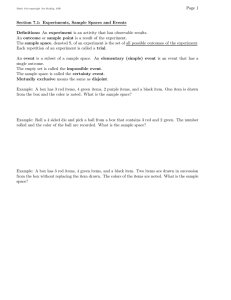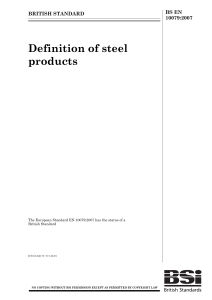CAST-1017 pdf of Products
advertisement
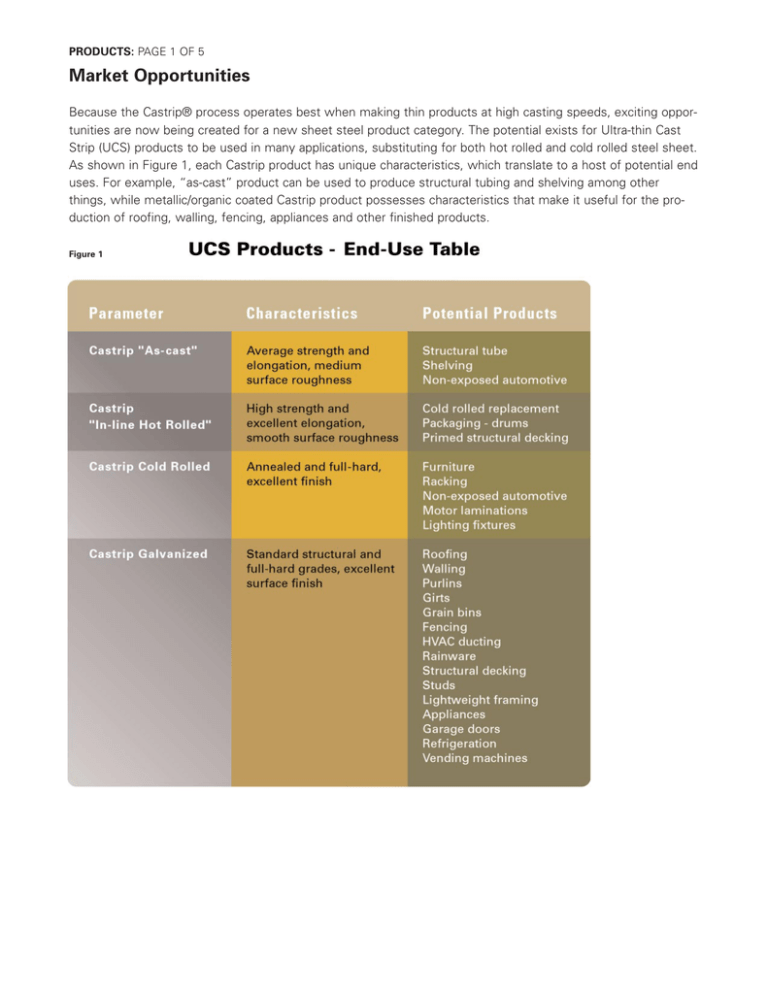
PRODUCTS: PAGE 1 OF 5 Market Opportunities Because the Castrip® process operates best when making thin products at high casting speeds, exciting opportunities are now being created for a new sheet steel product category. The potential exists for Ultra-thin Cast Strip (UCS) products to be used in many applications, substituting for both hot rolled and cold rolled steel sheet. As shown in Figure 1, each Castrip product has unique characteristics, which translate to a host of potential end uses. For example, “as-cast” product can be used to produce structural tubing and shelving among other things, while metallic/organic coated Castrip product possesses characteristics that make it useful for the production of roofing, walling, fencing, appliances and other finished products. Figure 1 PRODUCTS: PAGE 2 OF 5 As indicated in Figure 2, the initial target markets for strip cast products include steel fabrication, cold mill feedstock, painted purlins, structural decking and light gauge steel framing, as well as tubular goods and structural applications such as racking. As strip casting development continues and market expectations increase, product opportunities will expand. Projected future markets for Castrip products include HVAC, office furniture, appliances, food packaging and exposed automotive panels. The potential also exists for additional market opportunities unknown and unexplored at this time. Figure 2 PRODUCTS: PAGE 3 OF 5 Flexible Product Capability One of the most exciting aspects of the Castrip® process is its suitability for the casting of a wide product range. The Project M development work focused on low-carbon grades for the construction industry, as well as 304 (austenite) stainless steels. However, later research in support of Project M demonstrated that higher carbon grades, as well as 400 series (ferrite) stainless steels, are also castable with Castrip technology. In fact, the Nucor Castrip plant already has plans to extend their product mix into the higher carbon range and 409 stainless in addition to the low-carbon grades that will be made at the start. Another interesting aspect of the Castrip product’s flexibility is the numerous options for processing the cast strip into finished products, as represented in Figure 3. As-cast strip can be used as a replacement for conventional hot rolled material, and with the in-line hot rolling mill, strip from the Castrip process can also serve as a direct replacement for cold rolled material in many applications. Additional processing routes include various combinations of cold rolling and metallic coating to yield galvanized and cold rolled products. Figure 3 PRODUCTS: PAGE 4 OF 5 Unique Properties and Product Characteristics Although there are similarities between sheet produced from the Castrip® process and conventional hot rolled material, there are aspects in which the Castrip product is superior. Figure 4 highlights the properties of as-cast and in-line hot rolled Castrip product as compared to those of conventional hot rolled product. As indicated, the yield, tensile strength and elongation of Castrip products are comparable to that of conventional hot rolled mild steel. Castrip product does, however, hold an advantage in surface quality and centerline gauge variation, making it an advantageous substitution for conventional hot rolled material in many applications. Figure 4 PRODUCTS: PAGE 5 OF 5 Castrip products have a unique set of properties due to the cooling rates achievable during solidification. As illustrated in Figure 5, the Castrip process is capable of producing a wide array of strength-elongation combinations from a single steel composition, dependent on the cooling rate of the strip following casting and rolling. Thus, a much wider range of mechanical properties can be attained using the Castrip process than for steels processed via conventional casting and hot rolling. This phenomenon has particular interest for steelmakers and steel consumers alike because hardenability of Castrip products may allow for substitution of CRFH (cold rolled, full-hard) and HSLA (high-strength, low-alloy) grades at a lower overall cost. Figure 5
